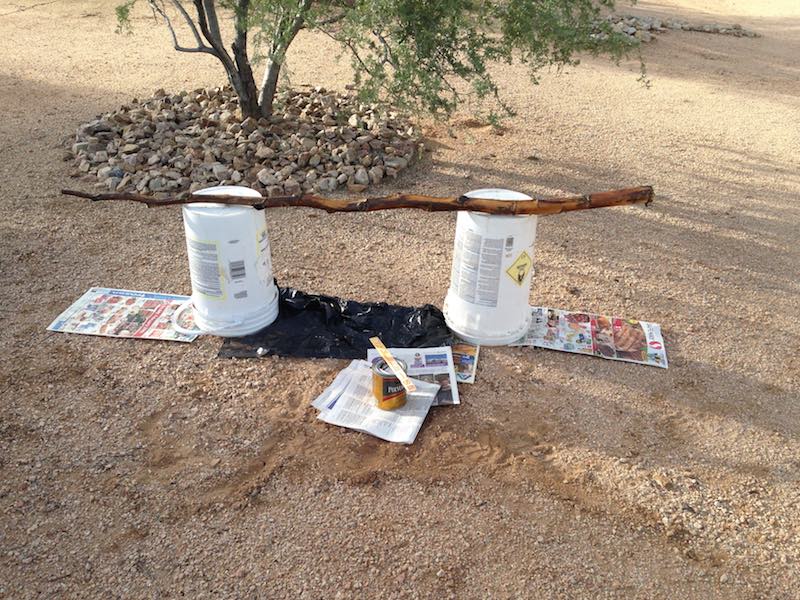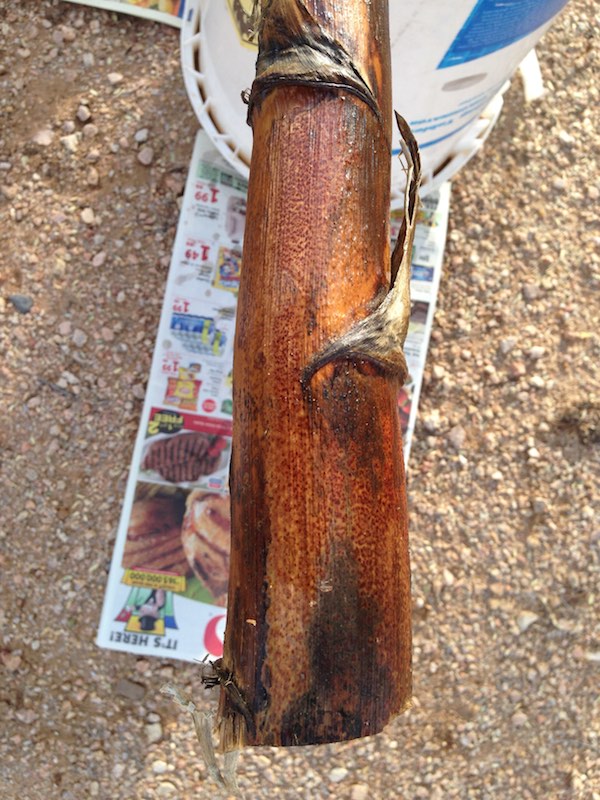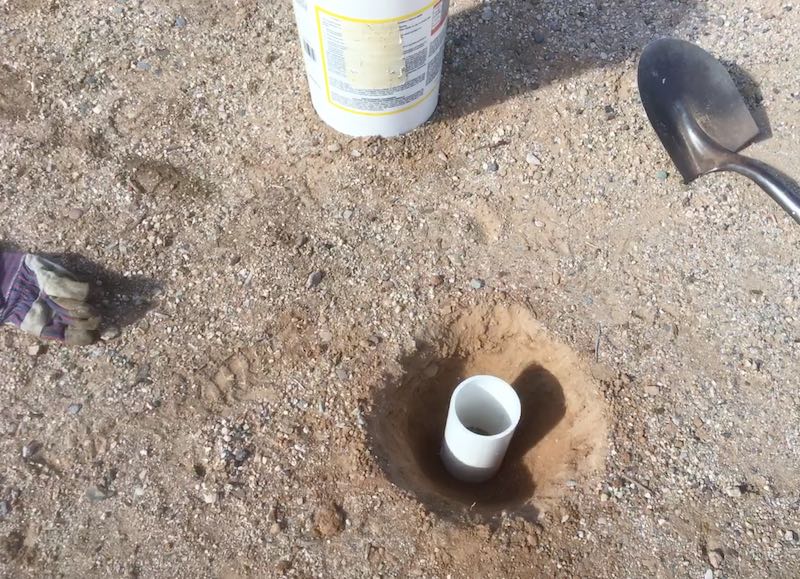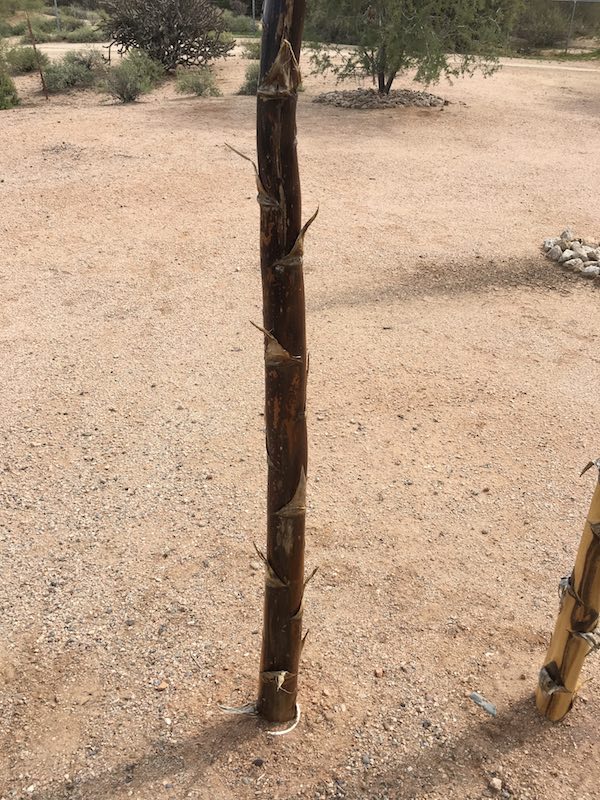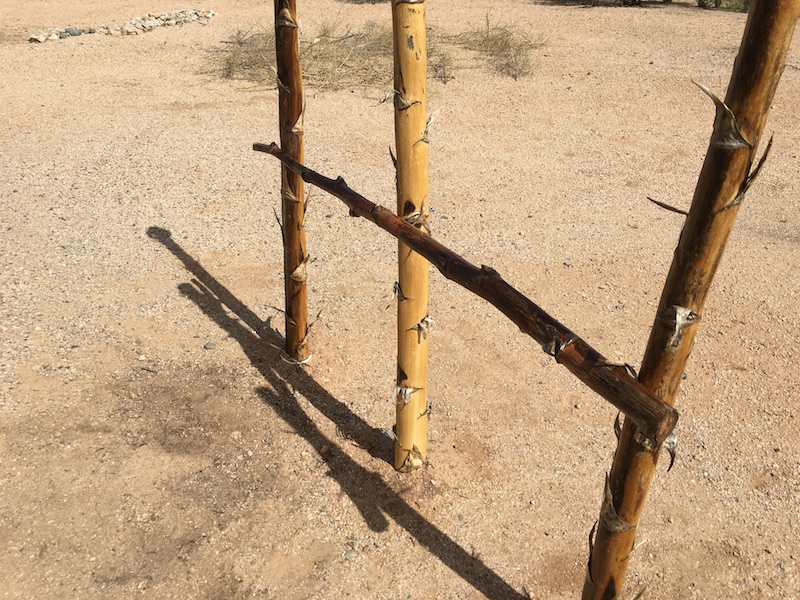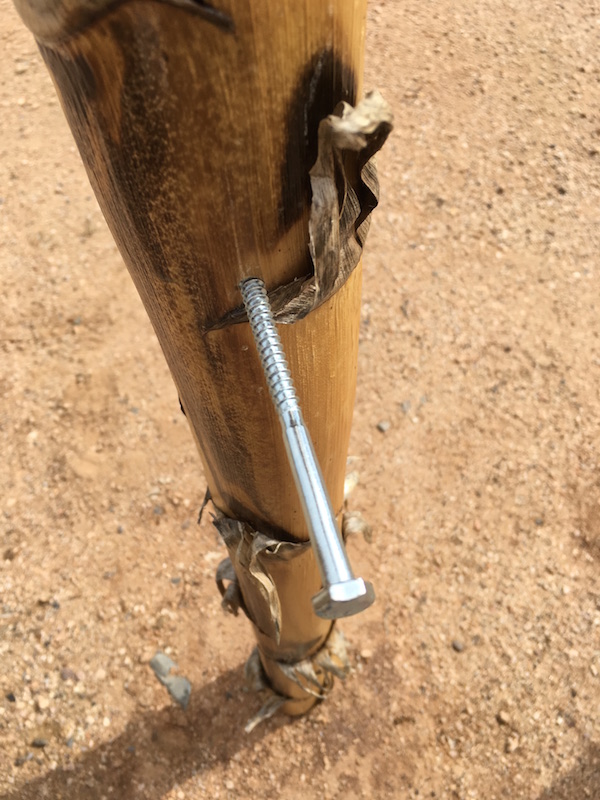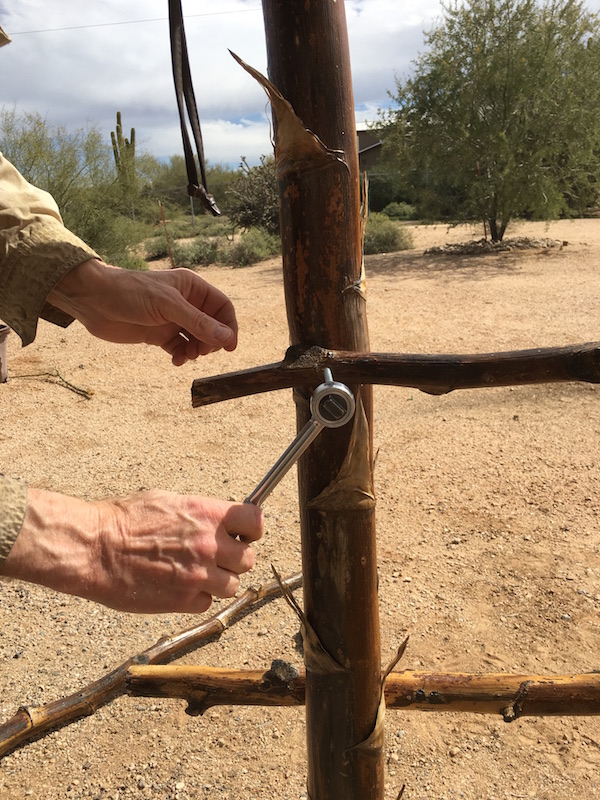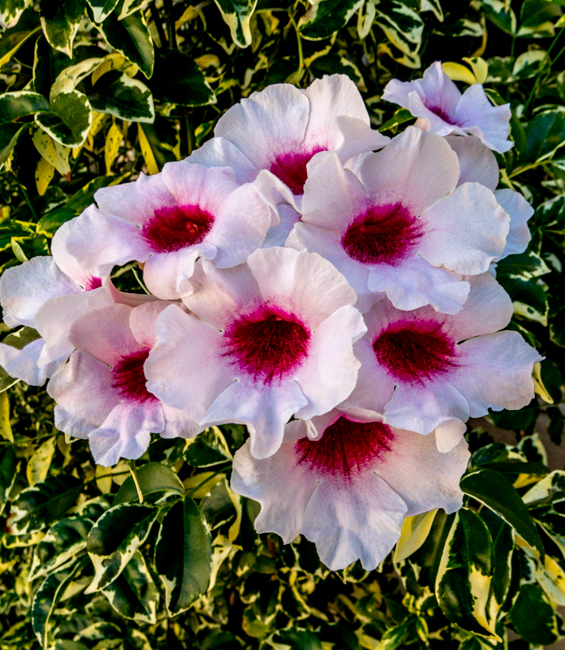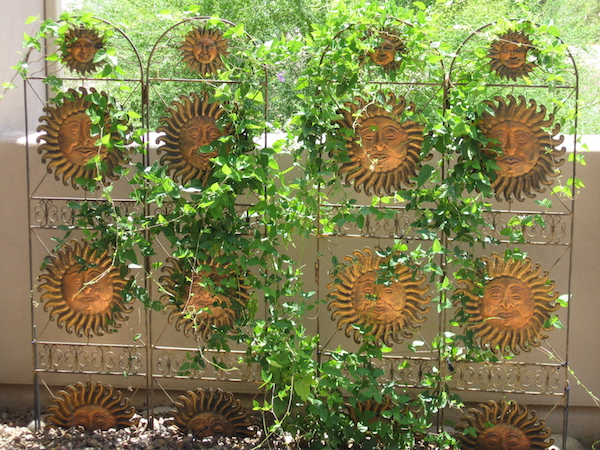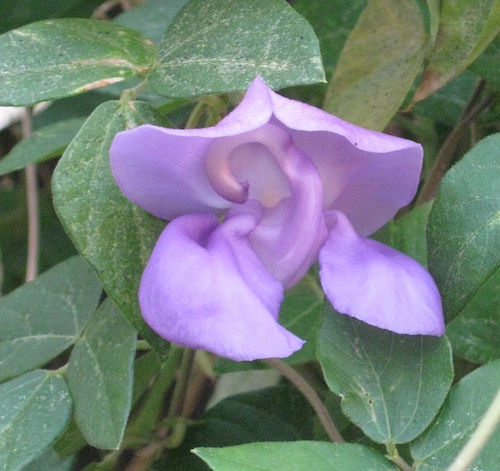In June of 2018, I wrote about growing Mums (Chrysanthemums) in the desert garden. As I explained, these have been more traditionally associated with the Fall in the north and eastern parts of the United States.
You can read the article HERE –
Mum is the Word in the Desert Garden
I thought I would follow up and show readers how the mums look now in nearly mid-spring. They are coming into bloom and will continue for a number of weeks until the process explained in the article above will take place again.
It may be easier to purchase new plants than to take the time and expend the effort to revitalize these older specimens, but I enjoy the challenge of keeping these long-time garden residents alive.
This year we have five pots of yellow mums which is an increase over the three we had last year. I won’t keep more than five because space is limited in our garden. You may recognize some of the pots from the post referenced above.
As a matter of orientation, this is a picture of the mums in front of our sun trellis and the snail vine from last year. You will note that there are three pots of mums
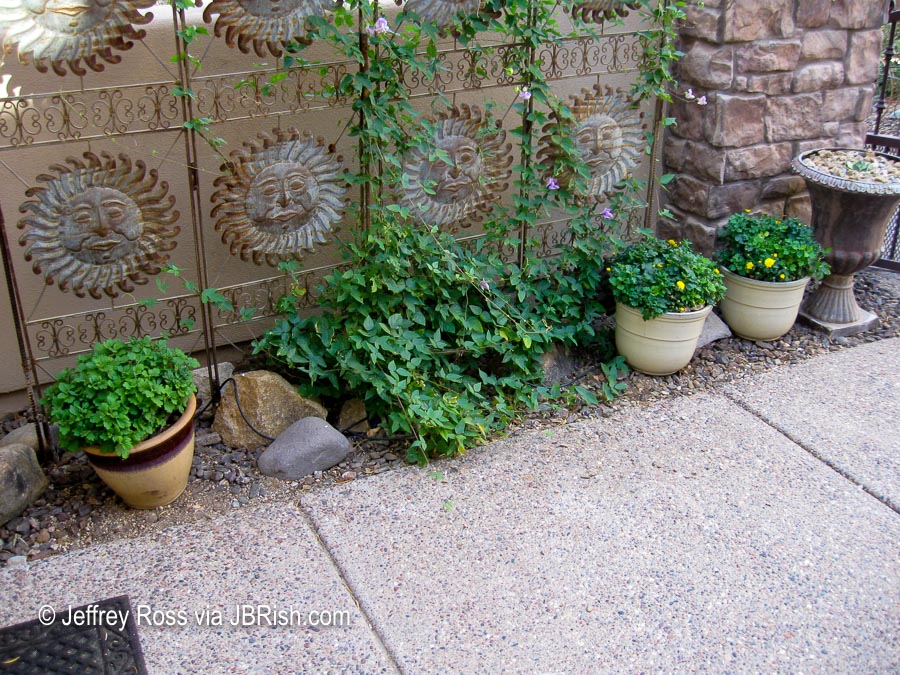
This is a rejuvenated mum currently residing on the left side of the trellis.

You may note the buds on the top of the plant. There appears to be an alyssum volunteer growing along the left rim of the pot. It gets a lot of shade this time of year and will receive mostly shade as the snail vine covers the trellis.
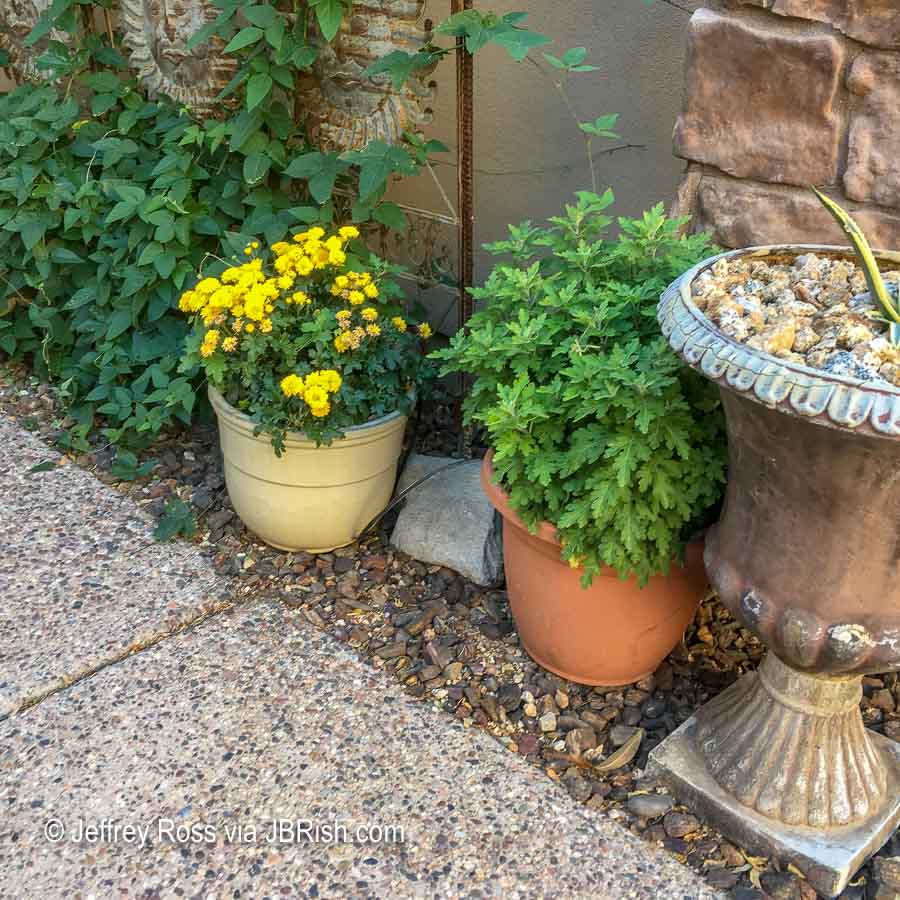
The two mums pictured above receive a bit more sun and the one that is flowering was in sunnier location a few weeks ago and moved to the trellis where there is an existing emitter for the irrigation system. The mum on the right is a bit leggy as it has been mostly in the shade and gets hand-watered because there is no emitter there yet.
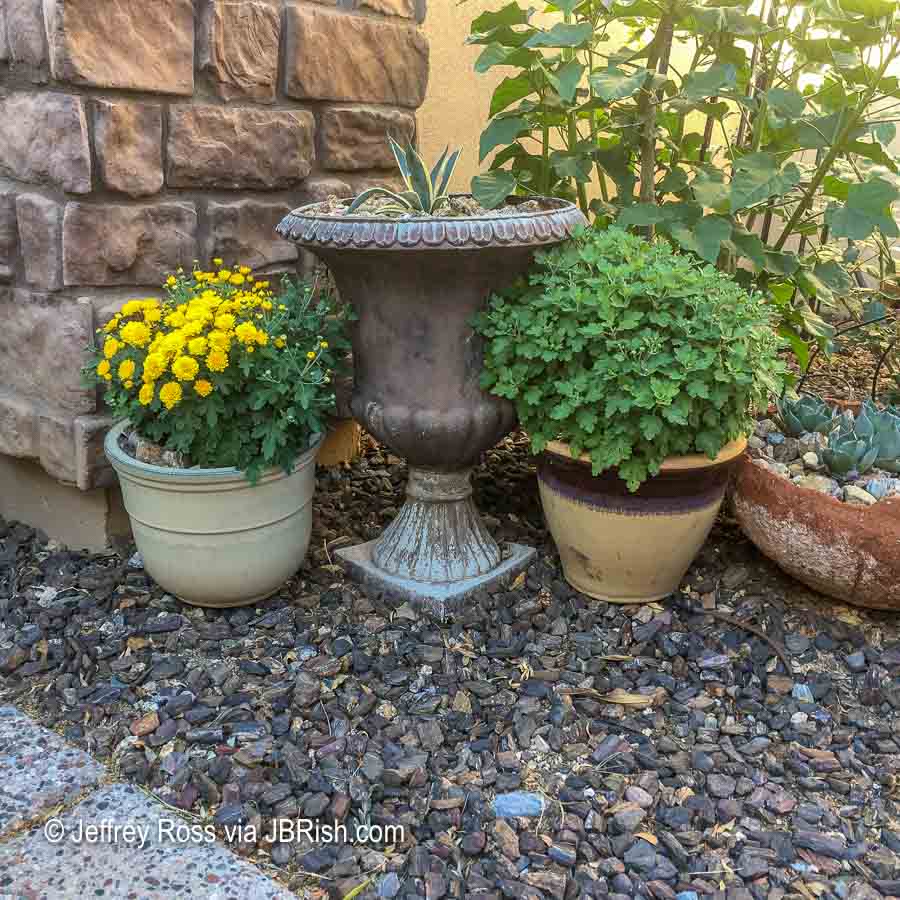
These last two mums are on the other side of the courtyard and receive afternoon shade from the Ipomea fistulosa and the Golden Showers Rose which are mostly off to the right of the frame. As you can see, the one mum is blooming and the other has many buds on it.
The nice thing about mums in the desert is that they tend to bloom twice a year and this time of the year, they add color to areas that are just beginning to thrive, i.e. the snail vine.
**********
All original content on this blog is copyrighted by Jeffrey B. Ross with ALL Rights Reserved. While reference links back to JBRish.com are appreciated and encouraged, please acquire approval for any reproduction of original content from this website.
©Jeffrey B. Ross 2014 – 2019 – JBRish.com


